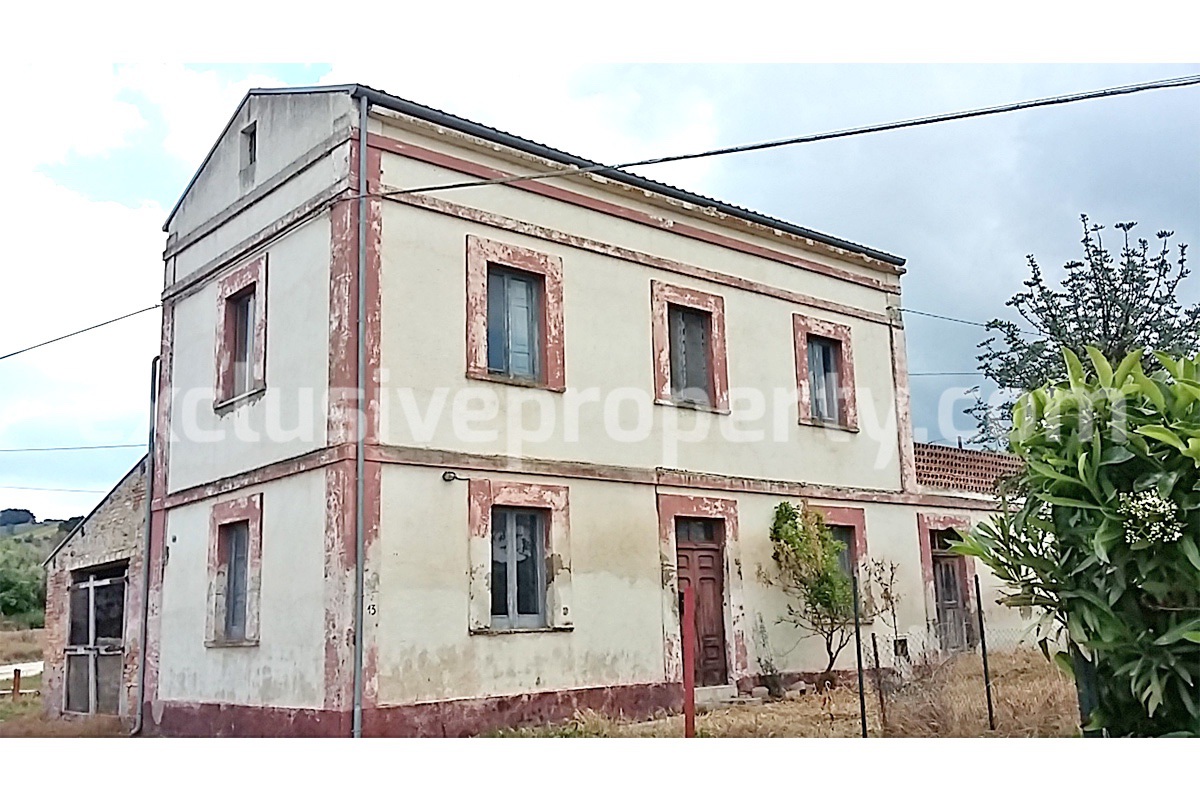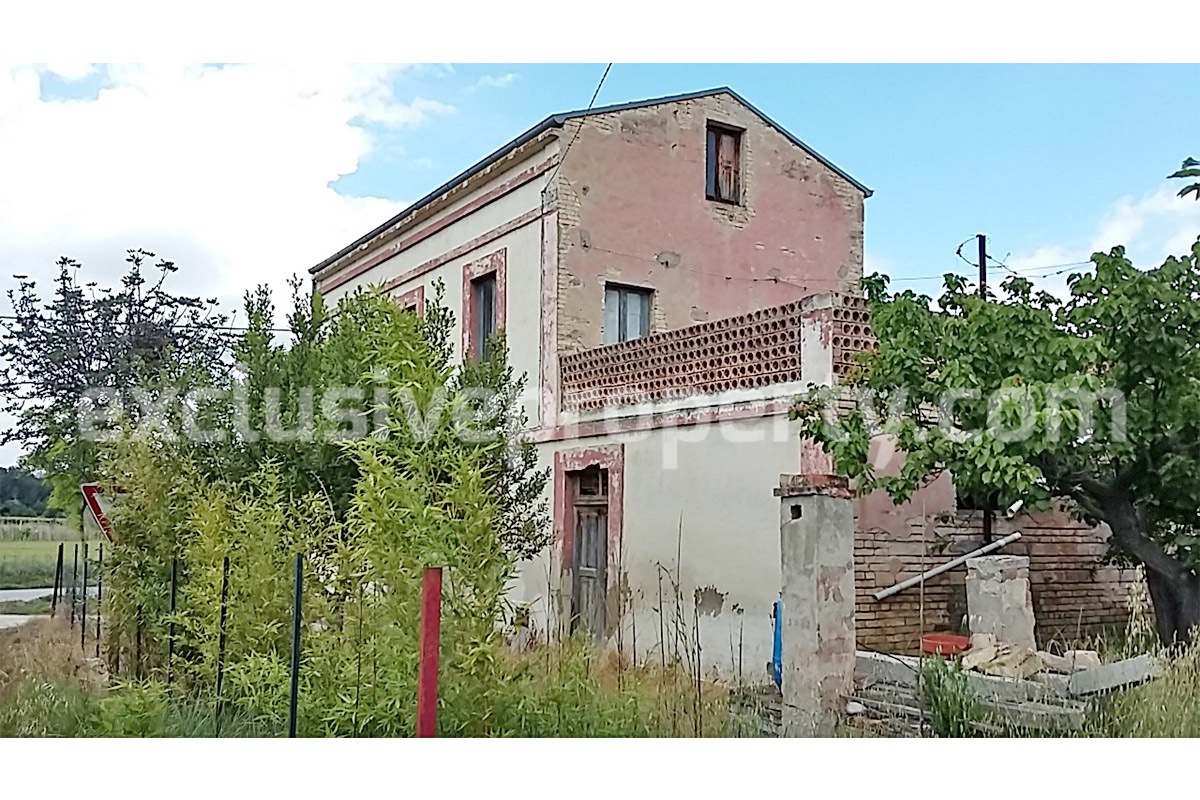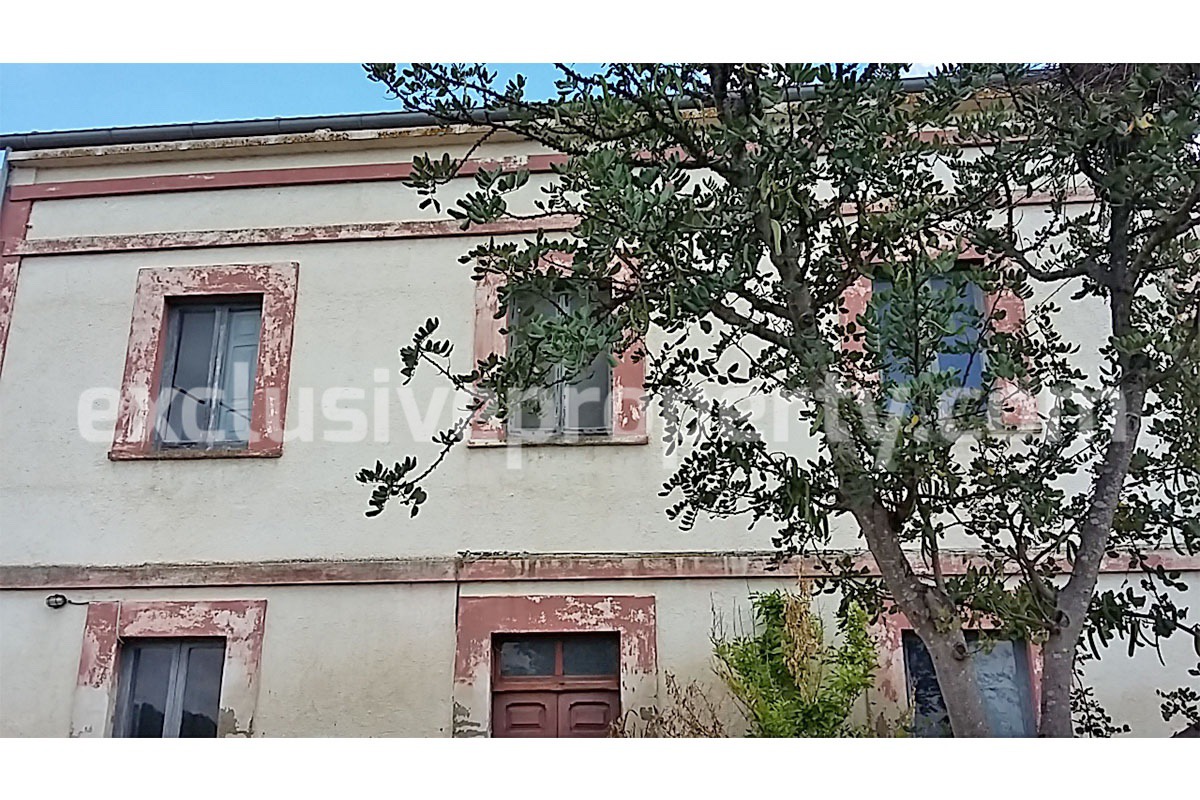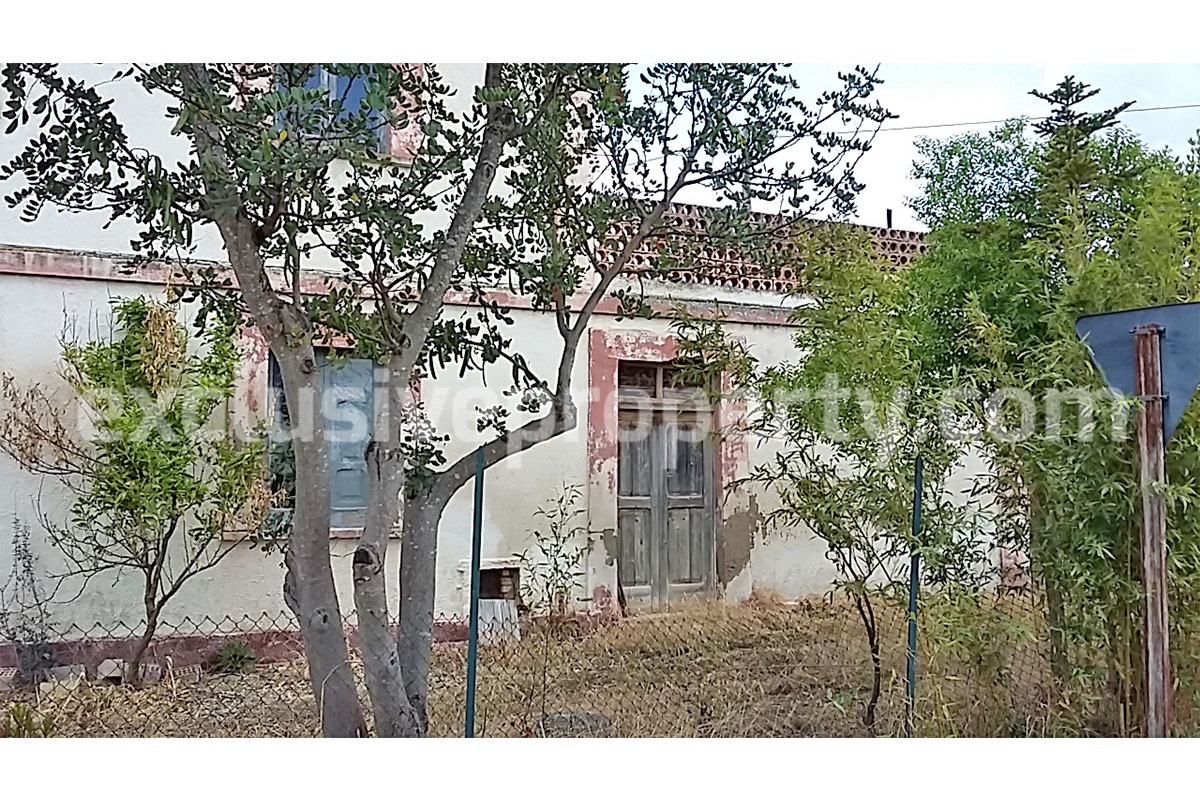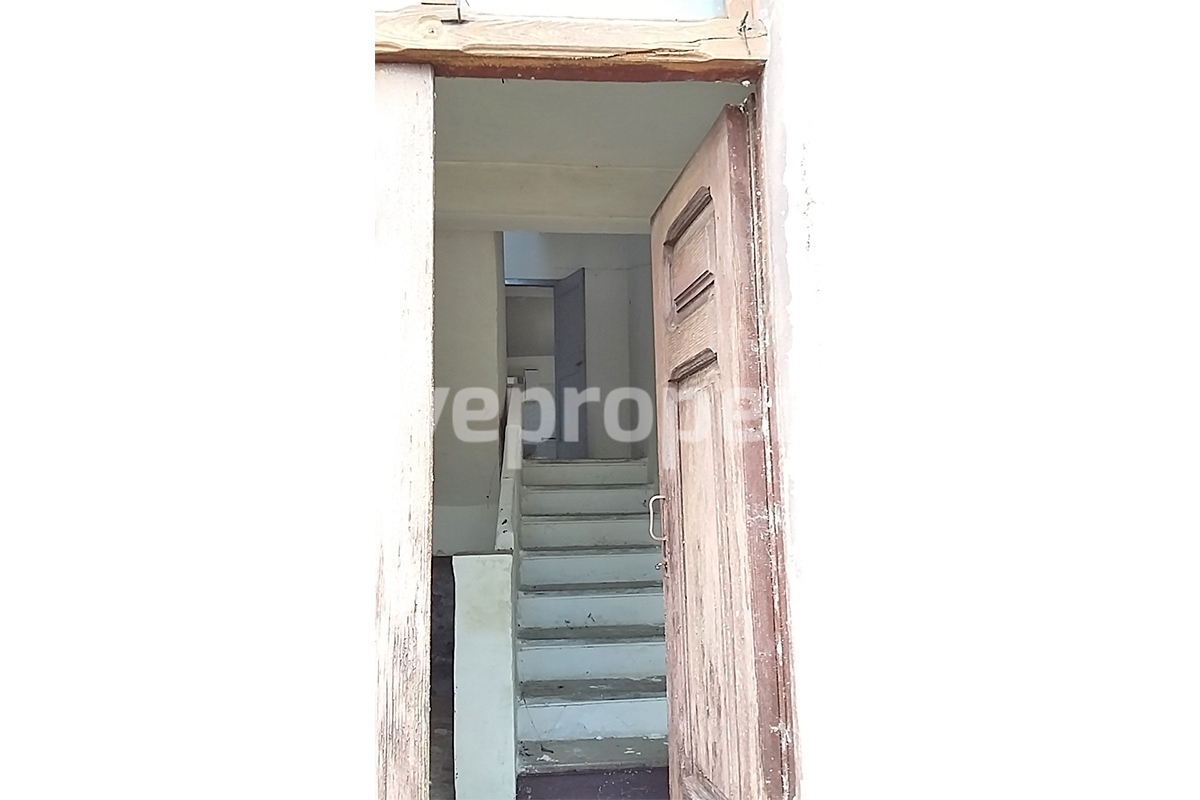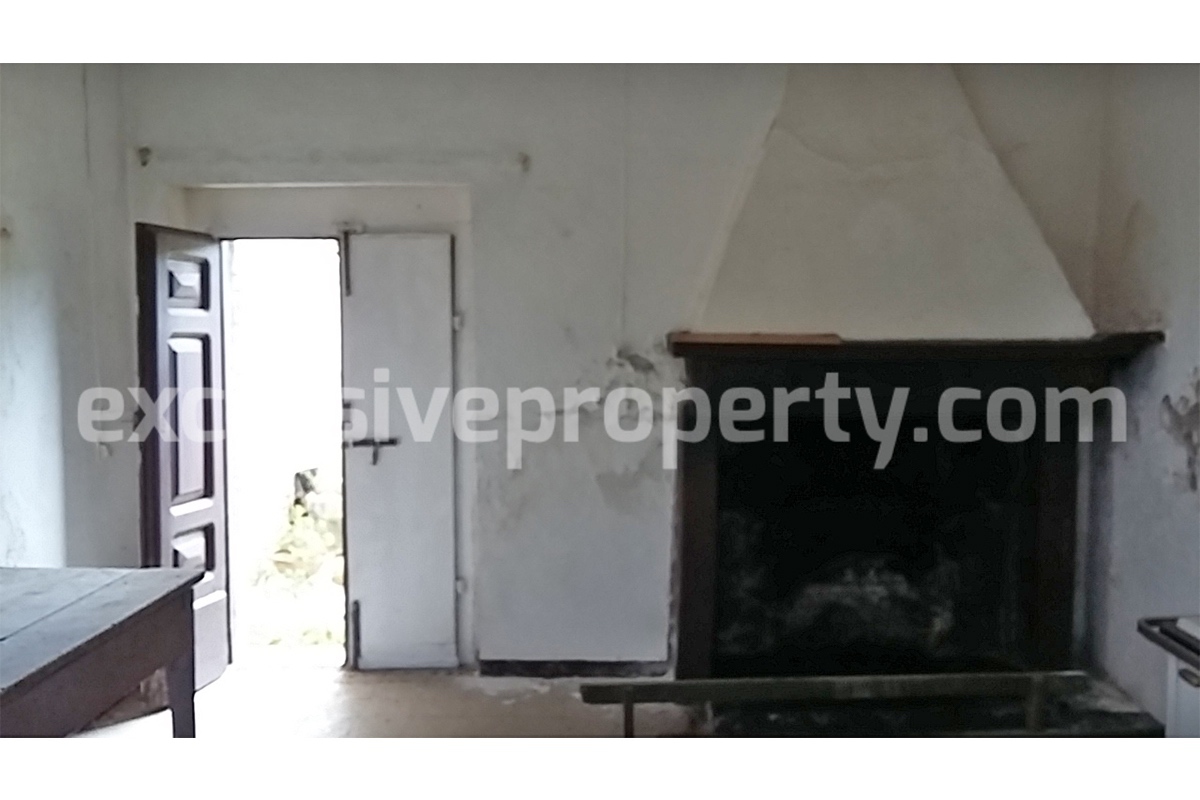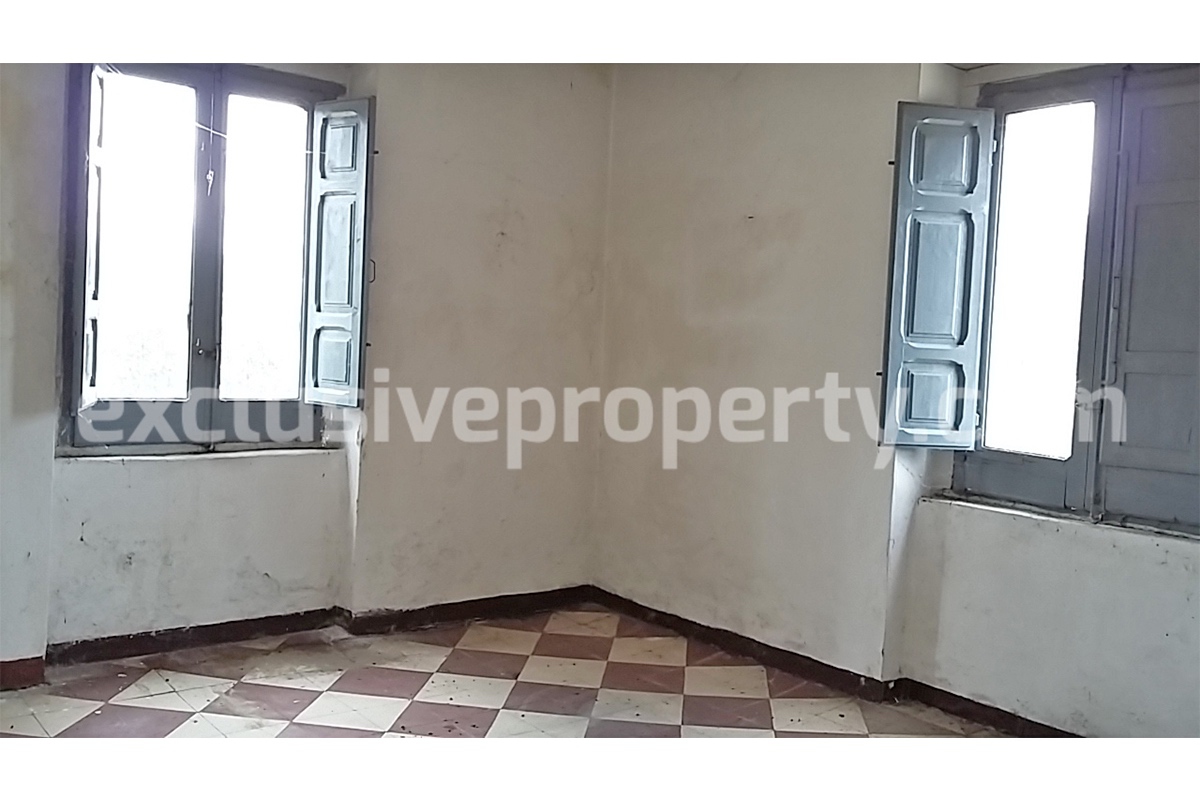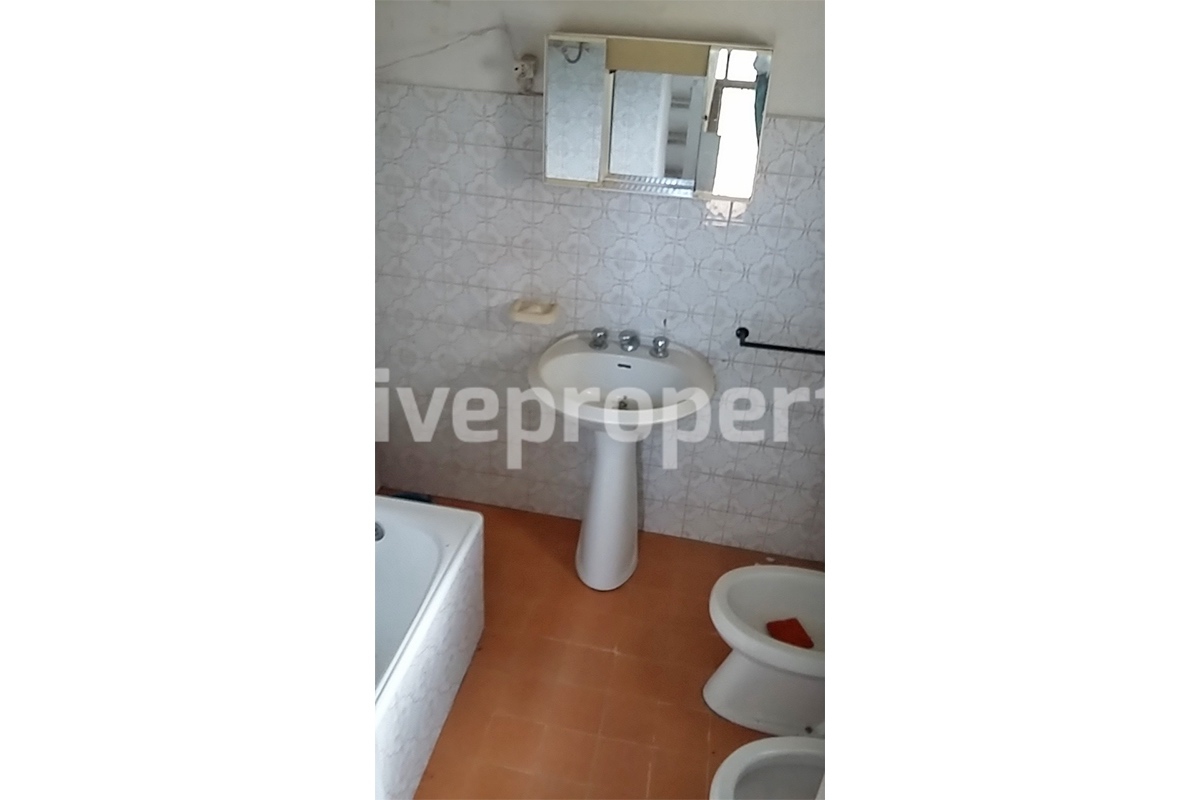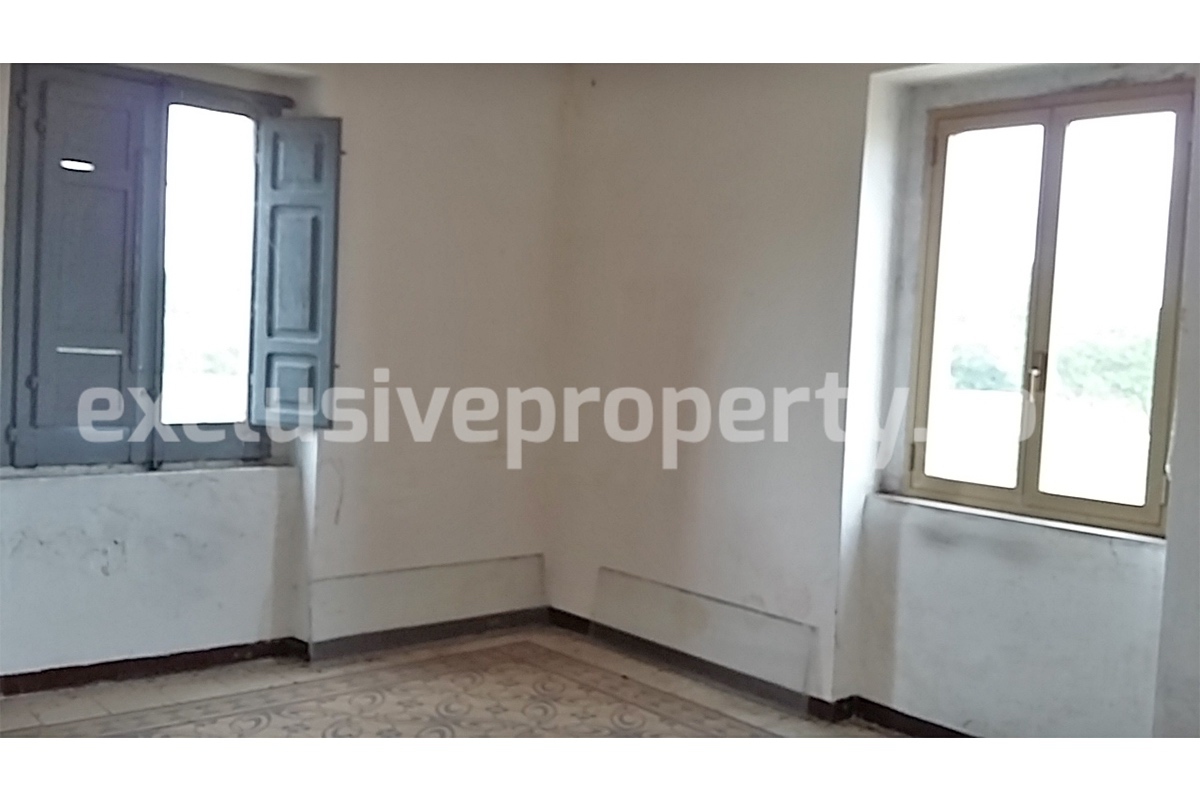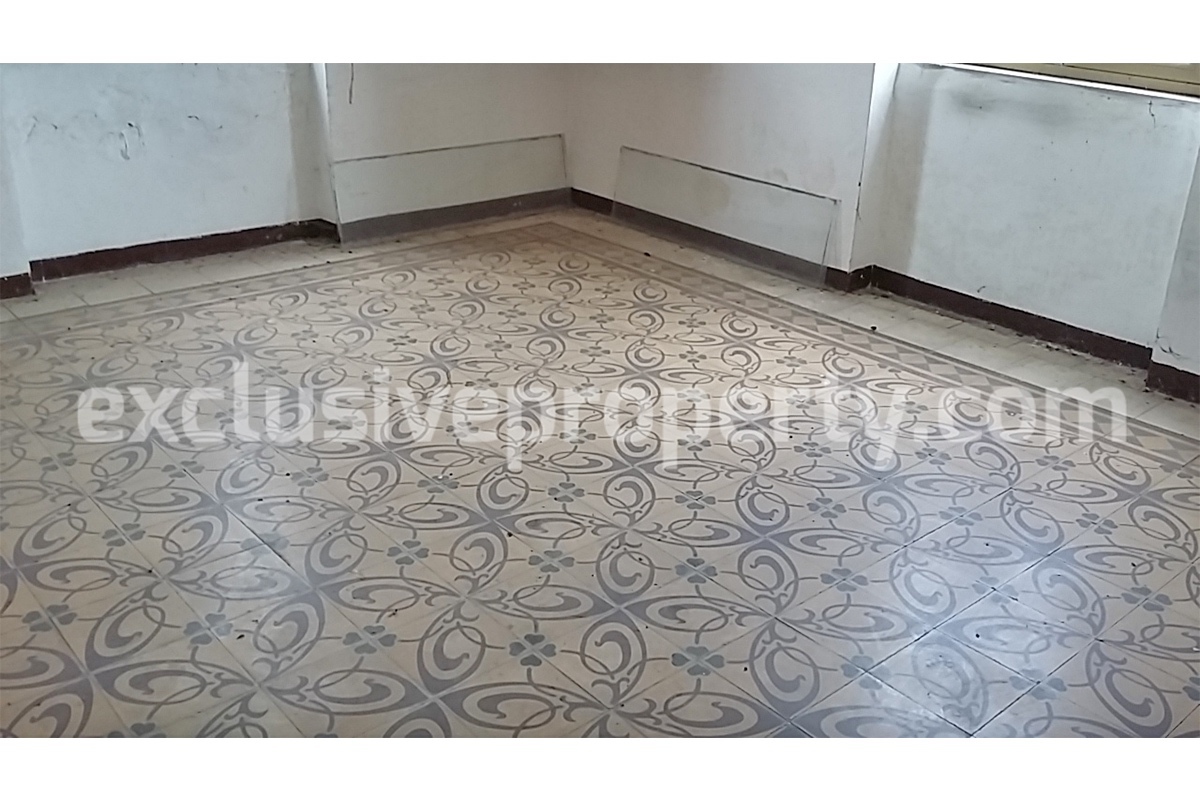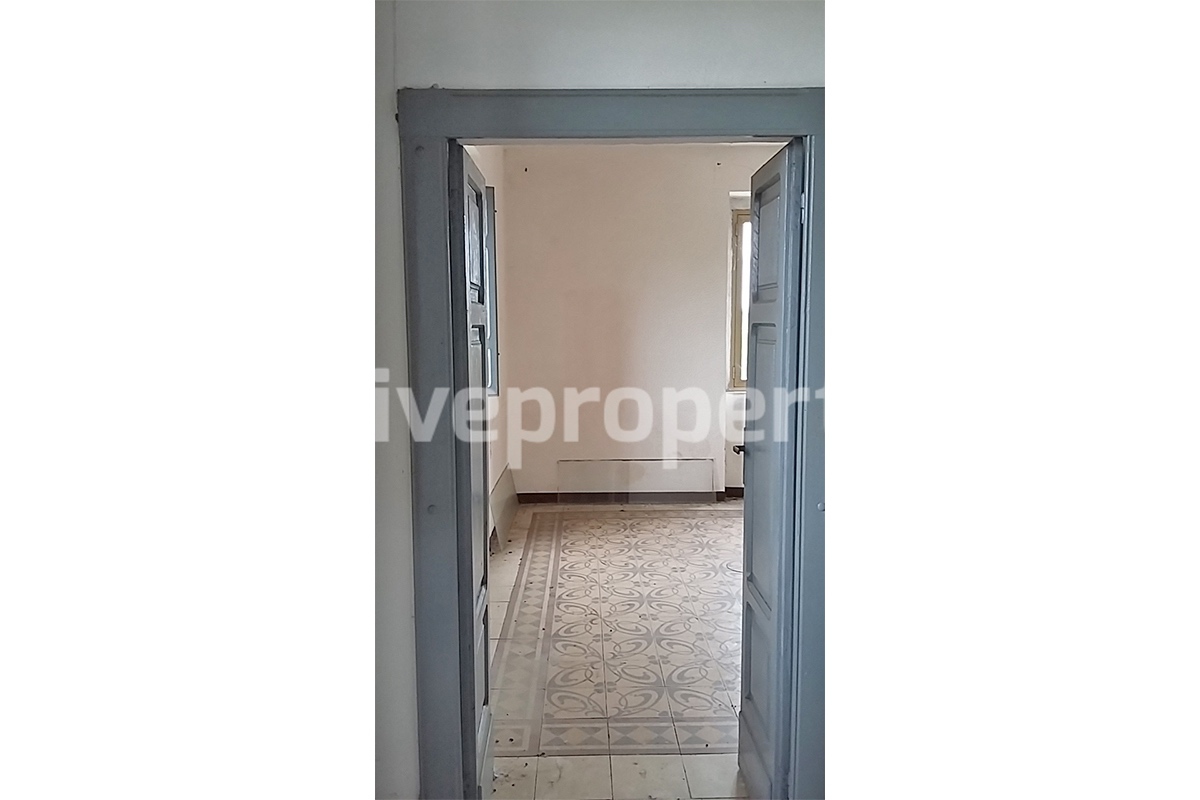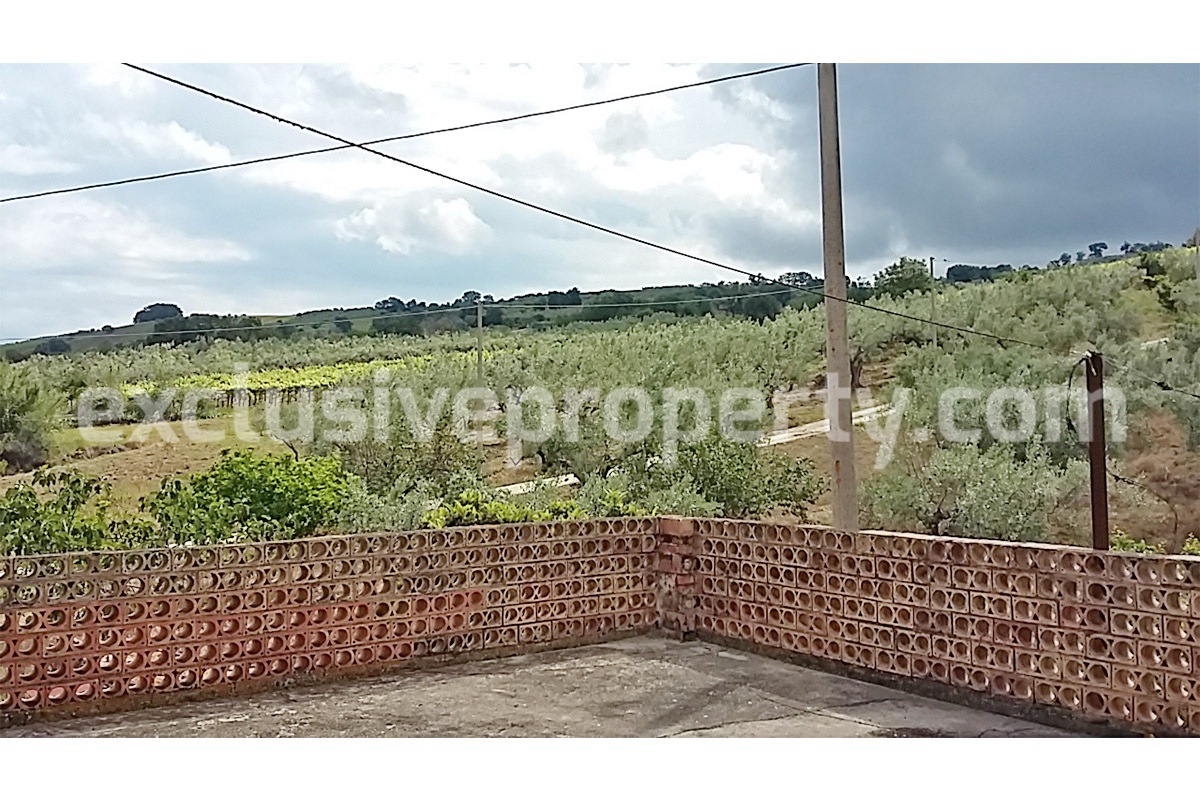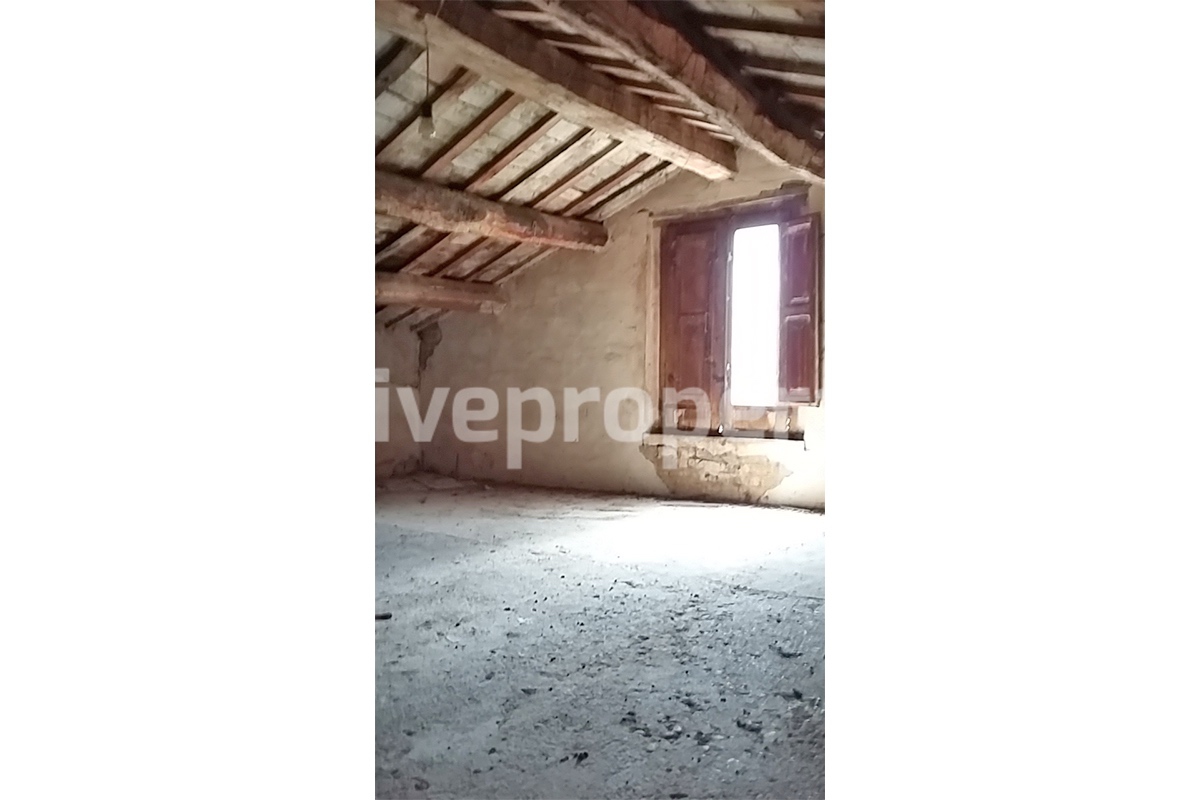At a glance
Like this property?
Call now +39 340 0624970 (english language), +39 333 2529230 (italian language) or REQUEST DETAILS for this property!
Description
Ancient farmhouse of the 40s of the '900 perfectly preserved in all its period features for sale in the Abruzzo region, precisely in Paglieta.
The cottage is spread over three floors for a total of about 250 square meters.
On the GROUND FLOOR there is a kitchen, a bedroom, a closet, a cellar, a large garage and three stables.
On the FIRST FLOOR there are two large bedrooms, a bathroom and a large terrace with a view.
On the SECOND FLOOR (attic) there are two rooms in the raw state.
It has large rooms with original floors, panoramic terrace on the Abruzzo countryside, well, stable with manger, small adjacent stables for courtyard animals with manure and courtyard of 900 square meters.
The water and electricity SERVICES are to be connected during the renovation works.
PAGLIETA is an Italian town of 4 148 inhabitants in the province of Chieti in Abruzzo. Country of Wine and Engines, located near the "Costa dei trabocchi". Visit Paglieta and you will be able to embrace in a single glance the entire Sangro valley with the Majella, the Apennine chain with the Gran Sasso up to San Giovanni in Venere and the Adriatic Sea. The origins of the town are very ancient: it was first a Frentano outpost, then a Roman colony. From some sources it is already inhabited in Roman times. The first mention, however, is documented in 1087, when it appears among the seven Castles object of a sale between the monastery of S. Giovanni in Venere, which receives it, and the Diocese of Chieti, which sells it; towards the end of the 12th century it is mentioned as Palletum and Castrum Palletae, terms that come from palea (type of forage and/or legumes) or from straw (clay house, like the houses in the first nucleus of the town, whose inhabitants were dispersed from the raids of the Saracens). The following century appear to be the walls, of which some towers remain, the pointed arch of the access door and the bell tower, then, from 1312 to 1533 the town belonged to Lanciano, as a gift from Charles V to Rodorico Arripalda. Subsequently from 1577 to the extinction of the feuds it belonged to the Mormile-Pignatelli family. The town participated in the uprisings of the unification of Italy with Giuseppe Tretta who was a Garibaldian major. It was first occupied by German troops and then by the British, but without suffering damage despite being positioned along the route of the Gustav Line (World War II).
Show MoreAmenities
- Cellar
- Fireplace
- Garden
- Terrace
Distances
- Airport: 53 km/46 min from Pescara airport.
- Coast: 13 km/20 min from the "Le Morge" beaches of Torino di Sangro, 25 km/32 min from the Nature Reserve of Punta Aderci, which alternates wide and sandy beaches with natural cliffs.
- Skiing resort: 64 km/1hr 19 min from the ski lifts of Passo Lanciano and 72 km/1hr 17 min from the Roccaraso/Rivisondoli ski lifts (with 24 ski lifts it has the largest number of lifts in Abruzzo).
- Train station: 11 km/16 min from the train station of Fossacesia - Torino di Sangro.

